Features of using Provence-style tiles for the kitchen
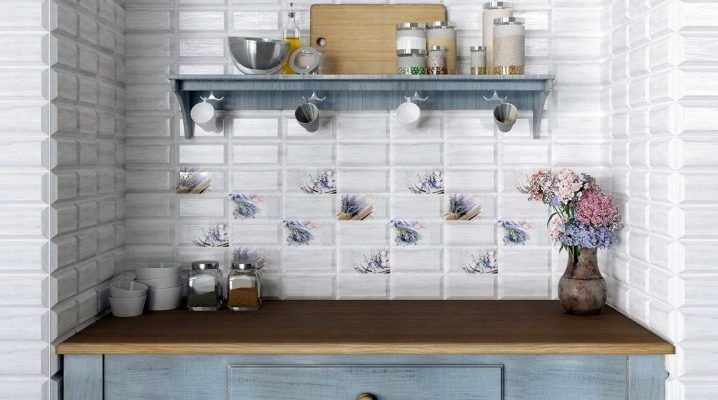
Provence style tiles are considered one of the most original kitchen claddings. Extraordinary and effective, it allows you to add a special flavor to the interior design, and therefore is increasingly in demand by buyers. Let's look at the features of its application, outline the advantages and disadvantages and dwell on design options through which you can make the most ordinary kitchen special.
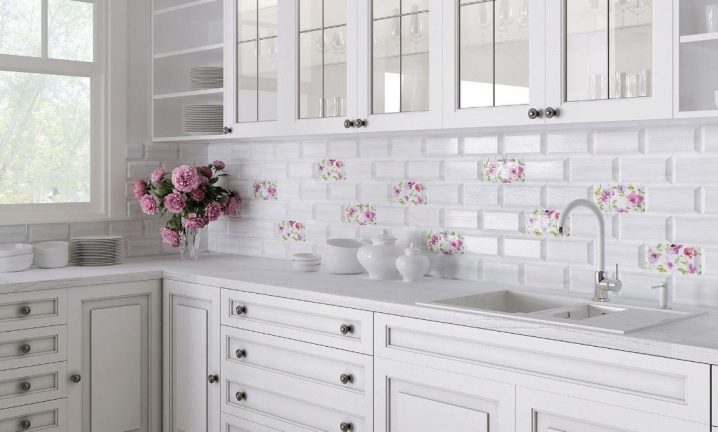
Application features
Ceramic tiles for the kitchen are considered a versatile solution that allows you to bring the right mood to the atmosphere of the room. This is a place where household members gather, eat, spend time and discuss family affairs. Tile used for wall or floor cladding in Provence style kitchens helps maintain the right atmosphere. It has the widest choice of print themes: by choosing a particular pattern, you can easily turn even the most boring interior into a room with a high aesthetic status.
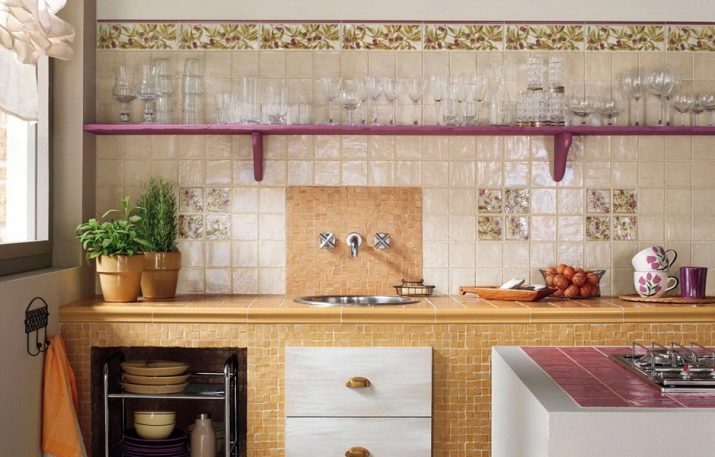
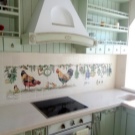
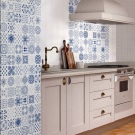
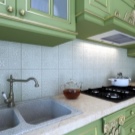
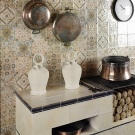
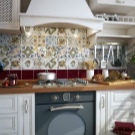
It is multifaceted, it is distinguished by the variability of the surface texture and the mass of color solutions, due to which it can create the visual effect of increasing the space and beat the layout flaws, giving them the appearance of advantages. The tiles in the Provence style are distinguished by the matte texture, and sometimes porosity or graininess, a certain simplicity, naturalness, the predominance of calm and muted shades, including pastel colors. At the same time, the design often contains a place for bright accents.
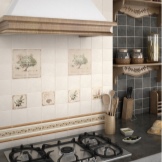
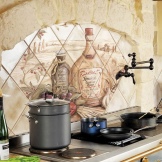

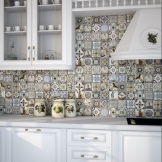
This cladding material is imbued with sophistication and romance. It is selected in a particularly careful way. Provence style wall tiles are perfectly combined with textures such as wood, brick, natural or artificial stone and metal. For the "apron" or constructive protrusions (niches), predominantly small modules with a different storyline are chosen, due to which it is possible to convey the desired atmosphere.
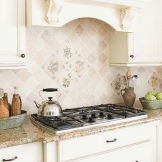
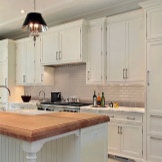
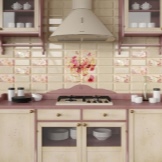
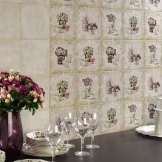
This tile is used in dosage. For example, it cannot be used to lay the entire floor and walls at the same time. This will destroy the design idea and deprive the interior of the sophistication. However, the "apron" can be supported by a similar table top (for example, under a stone or mosaic). The tile is good as a backsplash cladding material, while the basic installation should be simple. The floor with a simple "apron" can be combined. For example, a dining area or a cooking area can be laid out with tiles. The rest of the area can be decorated with linoleum or laminate.

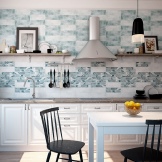
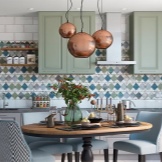
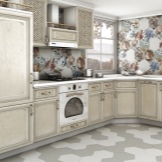
Advantages and disadvantages
Ceramic and tile wall tiles and Provence style floor modules have many advantages. Such material is not afraid of exposure to moisture, is resistant to fungus and mold formation, does not collapse during operation, does not respond to temperature changes and does not fade over time. In addition, the tiles have a protective coating that resists abrasion. It can be removed from dirt and looks aesthetically pleasing.
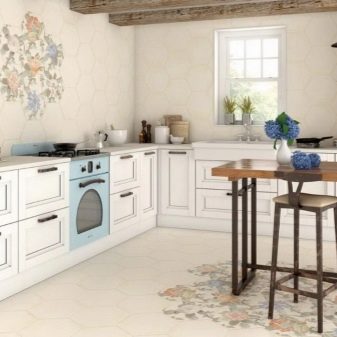
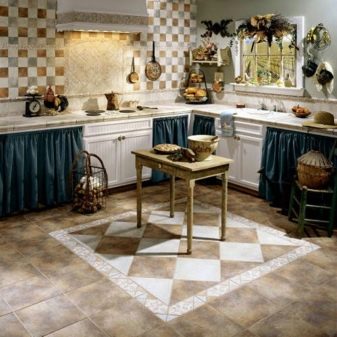
Among the line of Provence-style tiles, you can find unglazed dies with uneven edges that imitate handicrafts. However, with all its advantages, the tiled cladding has a significant disadvantage - its seams. Despite the fact that the material itself is easy to clean and does not deteriorate over time, the seams will be contaminated in the first place.
In addition, matte modules are more problematic to maintain than glossy dies. The same can be said about porous fragments: it is more difficult to clean them from contamination. Also, we must not forget the nuance that the seams will visually divide the space, and this will have to be played up by reducing the number of arrangement elements. Provence style implies a certain space, lightness should be felt in everything.
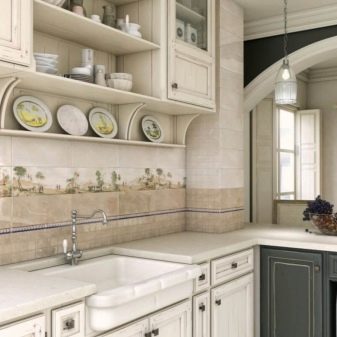
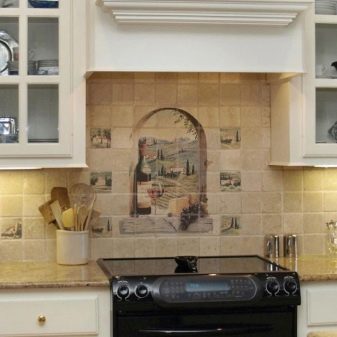
Design options
One of the harmonious decisions in the selection of the design will be the choice of "companion" tiles. A uniform color scheme will look very harmonious in the interior. In this case, the bet can be made both on the texture of the stone and on the wood. This will leave room for a bright accent (for example, a small part of the kitchen "apron" can be highlighted with a mosaic in the form of a colorful bouquet, still life or some kind of panel with an ornament).

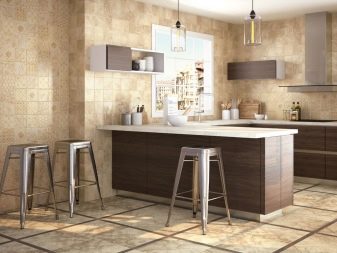
As for the theme of the kitchen drawing, it will depend on the general design idea. For example, it can be a brick-like apron design. Then it is preferable not to complicate the floor with masonry from small fragments. Larger tiles can be used here. The same will be the case with the decoration of the “apron” with a patchwork design: this is a bright accent in itself, and therefore it is undesirable to complicate the interior.
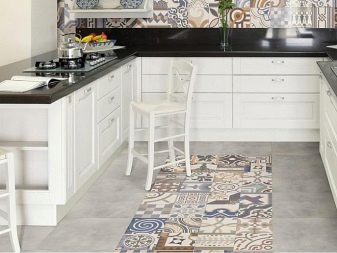
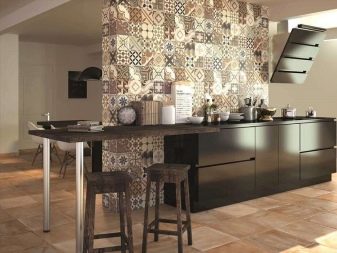
You can create a vintage touch using semi-antique modules. Despite some roughness, such a tile looks extremely harmonious in the interior of the kitchen. When laying tiles, it is undesirable to resort to modern-looking designs: they simplify the interior. You can use mosaics of different geometric shapes for facing (for example, tesserae can be square, oval, rectangular, round, trapezoidal).
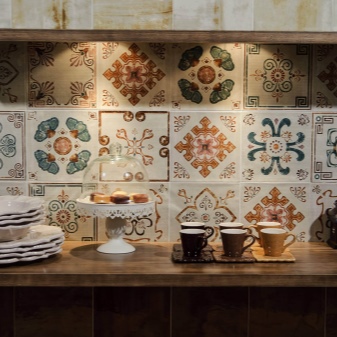
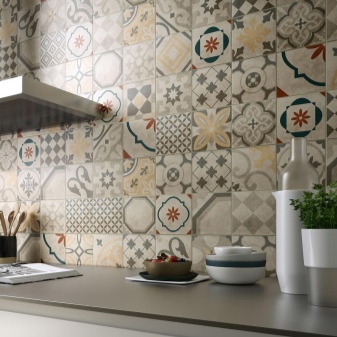
At the same time, it is possible to simplify the styling by purchasing not separate tesserae, but a matrix on which the elements are attached to a special grid and make up fragments of the picture with a certain theme. As a rule, the dimensions of the matrix are 30x30 cm. You can use them to create a panel, say, in the area of the sink or cutting table, or even in the area of the stove. You can take a panel with birds as a basis. It will look especially impressive in interior design if it is surrounded by tiles with uneven edges and a slight relief. In this case, the panel itself must be surrounded by a convex frame.
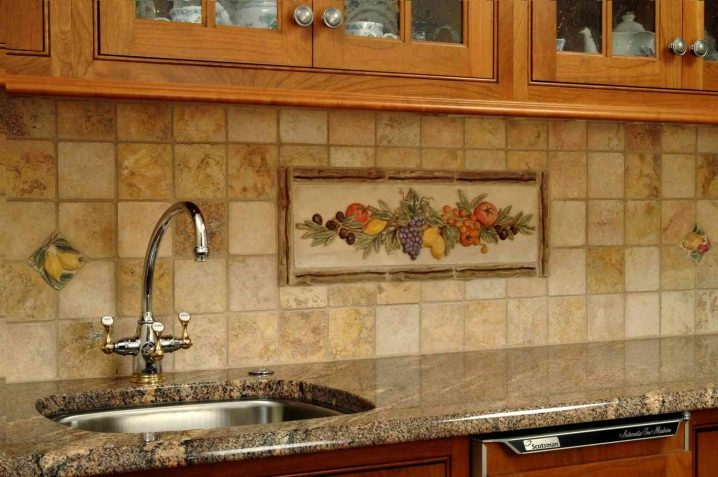
One of the unusual solutions for tiling the kitchen floor can be honeycomb tiles. Against the background of laconic furniture and a light dining table, it will look very expressive. To maintain the style, you can buy several laconic lamps, making up for the lack of illumination of the dining table or cooking area. The completion of the Provence style kitchen interior should be textile curtains of a simple cut. If the kitchen is combined with the living room, you can lay out the fireplace pedestal or its facade with decorative tiles.
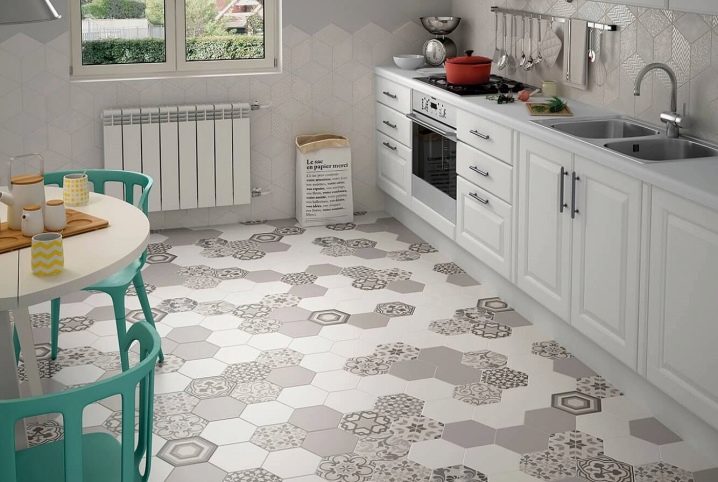
For information on how to use Provence-style tiles for the kitchen, see the next video.










The comment was sent successfully.